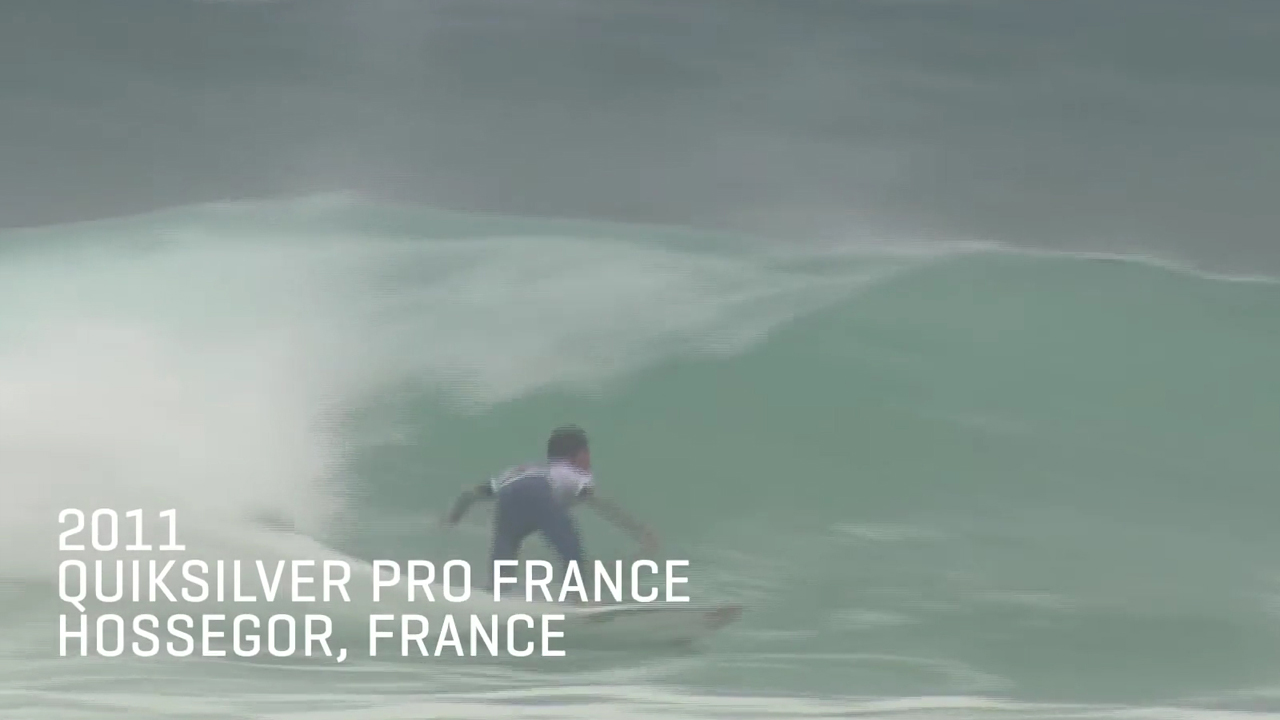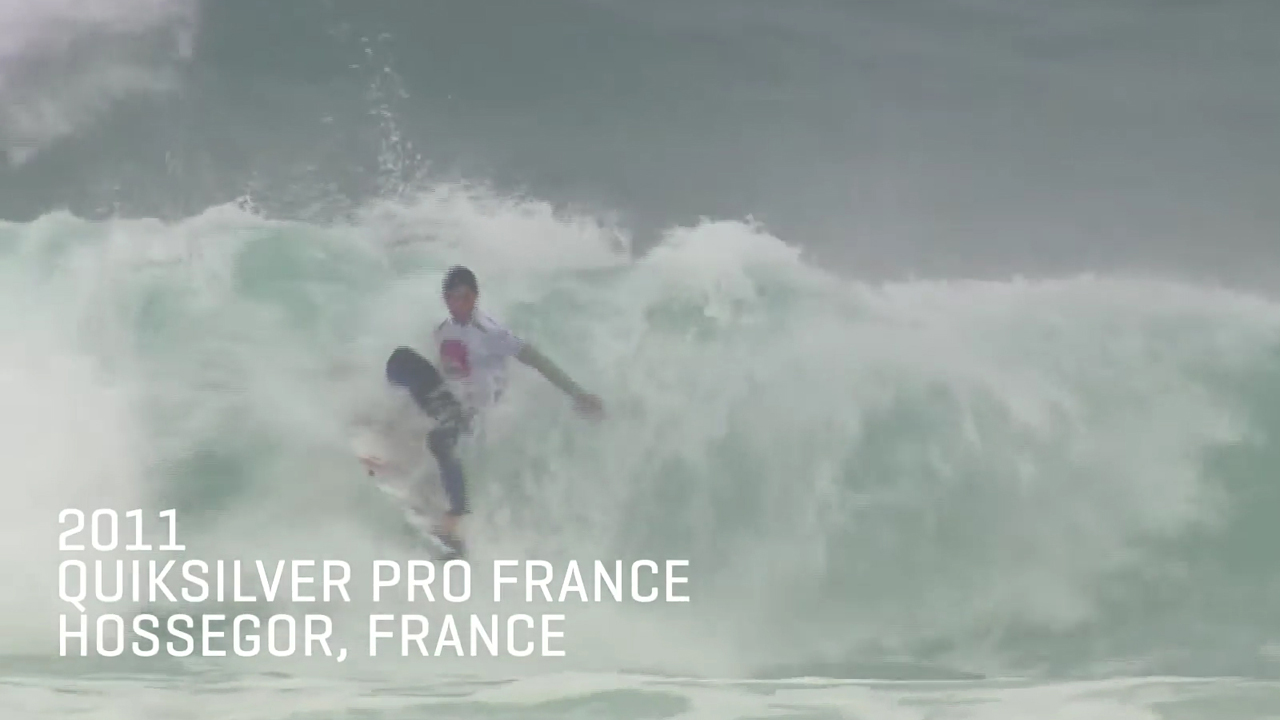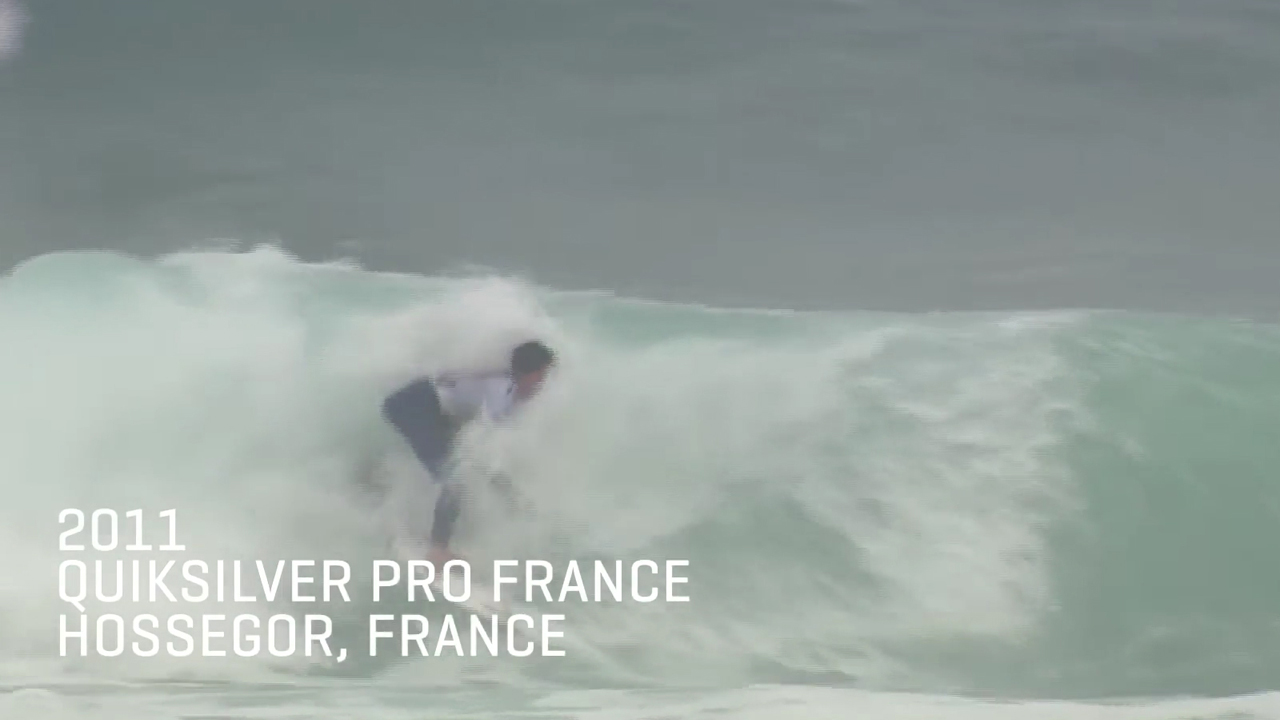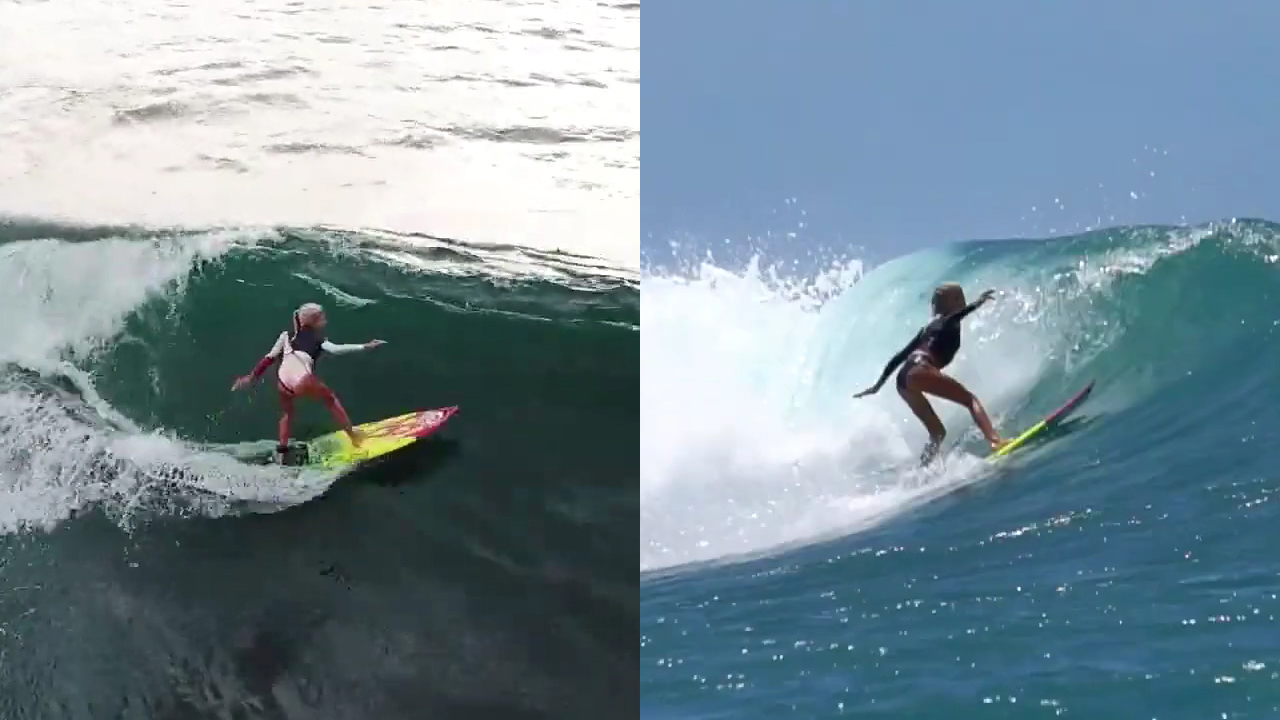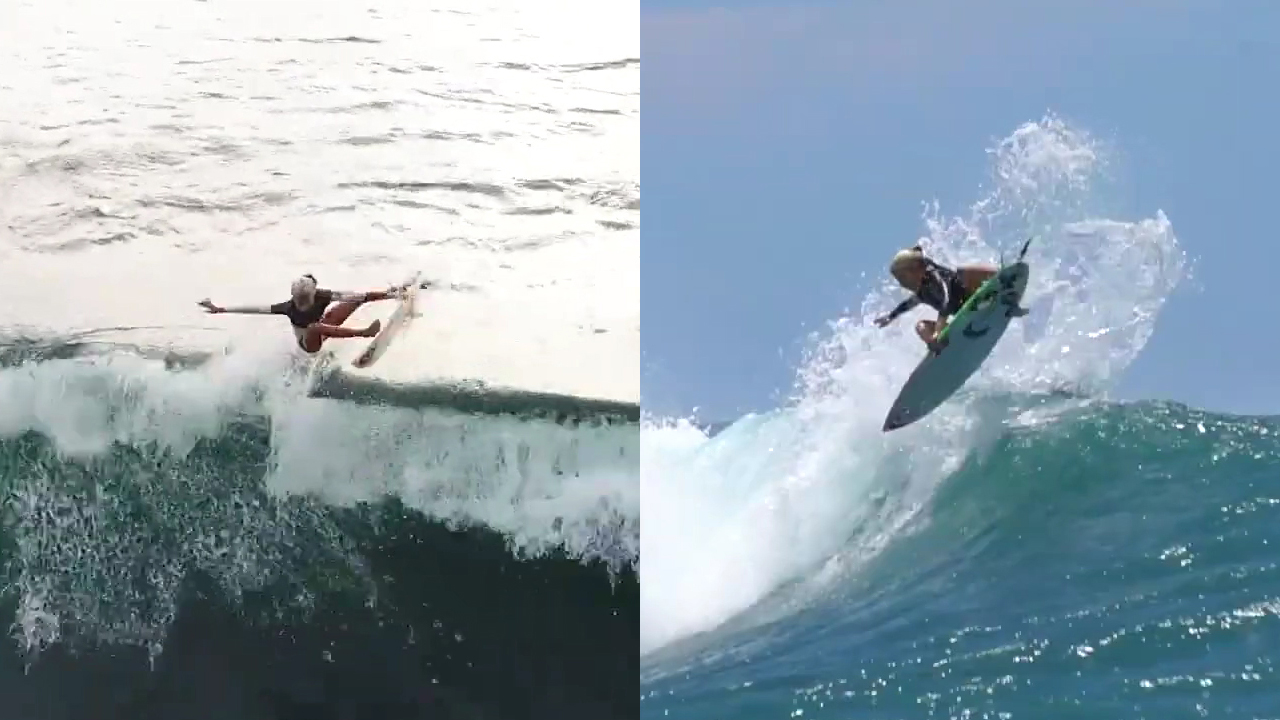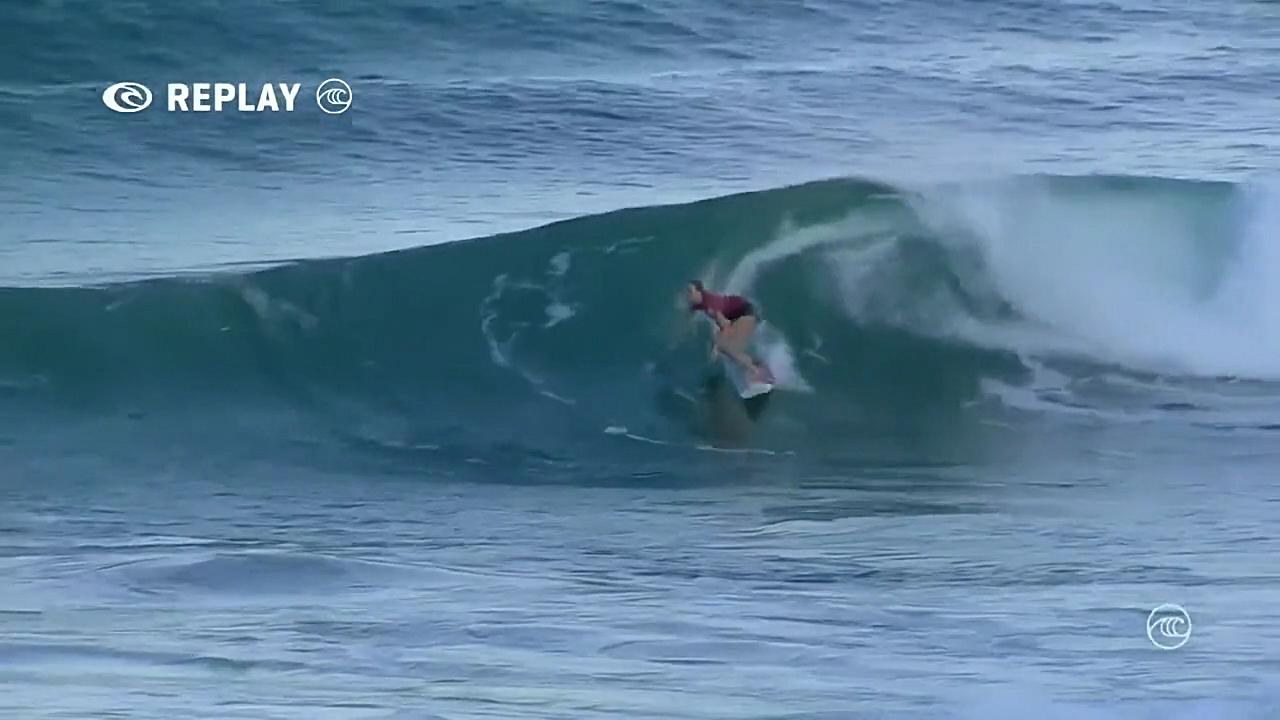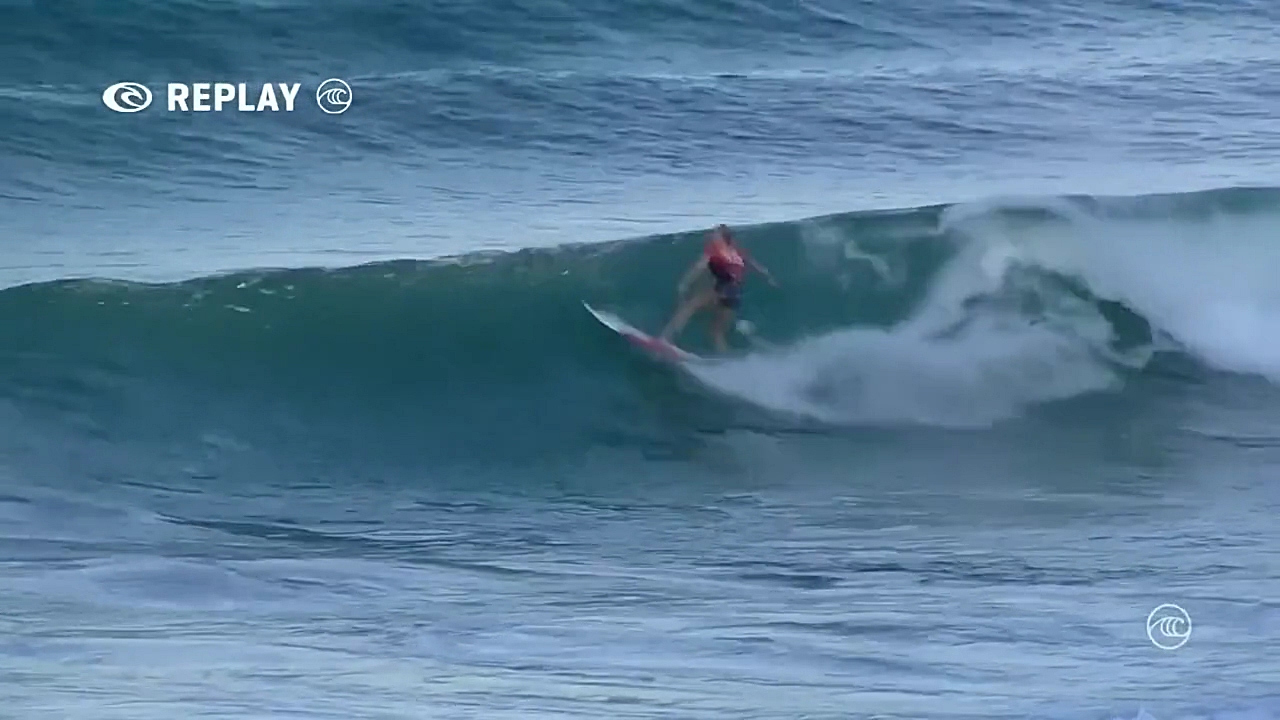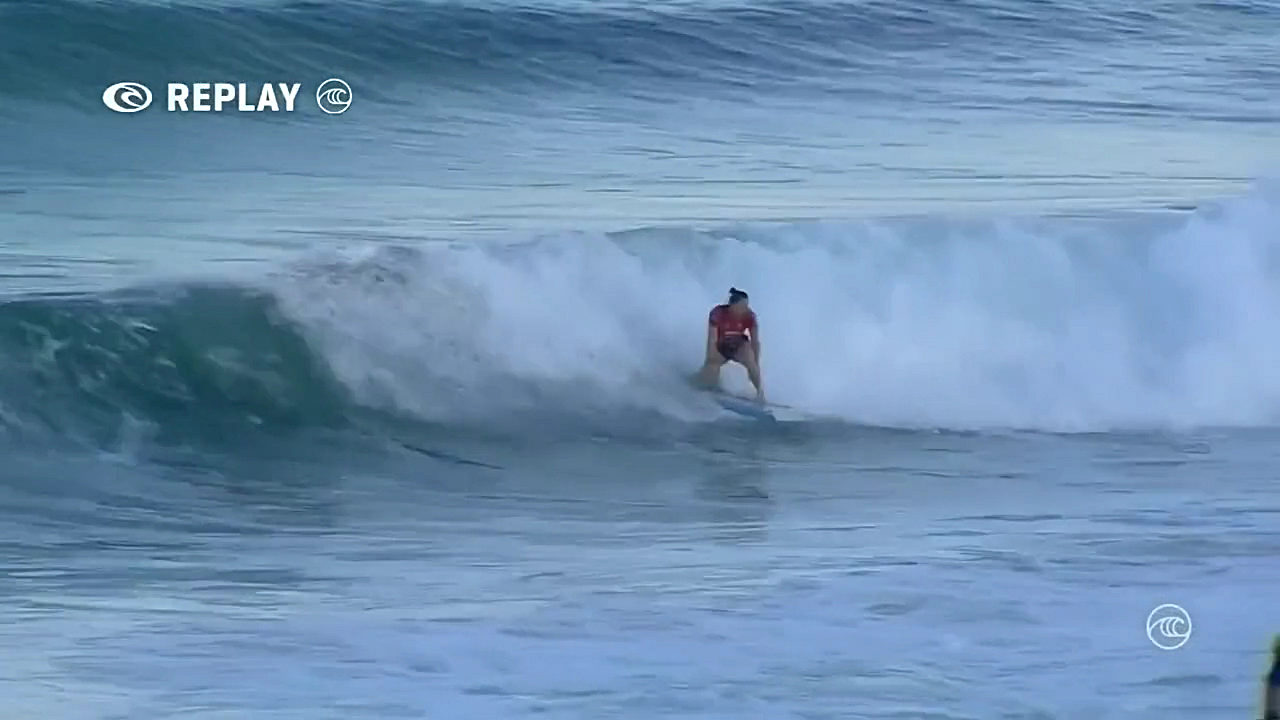Filipe Toledo and Ryota Matsushita:

1) Gaining speed: Whether it’s simply using gravity in Filipe’s case or finishing one last pump in Ryota’s case power surfing requires speed. They have most likely already identified the section at this point.

2) Getting low and reaching for the wave: Both surfers seem to be opting for a mid-face bottom turn rather than a deep bottom turn.

3) Winding up and springing out of the bottom turn: Both surfers throw their back arm back and lead toward the section with their front arm or shoulder. If their shoulders were roughly perpendicular to their stringer in the previous frames they have become parallel to their stringer or a few degrees past parallel across the stringer here.

4) Beginning the heel side top turn: Both surfers have straight front legs and bent back legs. Their leading front arm is relaxed the back arm is over the toe side rail for balance.

5) Opening up the arms: As both surfers reach for the water in the direction they are headed they open up their arms to create a turning axis and get a bit of extension as their back arm creates space from the back foot. The extension is more prominent with Filipe, Ryota may be nursing the turn a little given the much smaller wave and lack of a trailer fin.

6) Anchoring the leading arm in the wave face and bringing the back arm forward: Both surfers have their leading arm relaxed and planted in the wave face bringing the trailing arm and shoulder across the body allows for powerful rotation.

7) Beginning the follow through: As both surfers start to compress they bring their trailing arm and shoulder more fully forward and across their body in the direction their board is headed.

8) Finishing the follow through: The exaggerated follow through is mainly due to how long they hold the water with their leading arm. Both surfers are fully compressed with one arm over each rail for balance, leading arm still holding the wave face, and weight on the front foot.

9) Switching the anchor or pivot arm: Both surfers reach for the water with their trailing arm and start to shift their weight back to the tail to begin turning back down the line.

10) Weight on the back foot to re-engage the fins: As long as they come out of the maneuver with enough speed both surfers can shift their weight onto the back foot, re-engage the fins, and complete the turn back down the line.
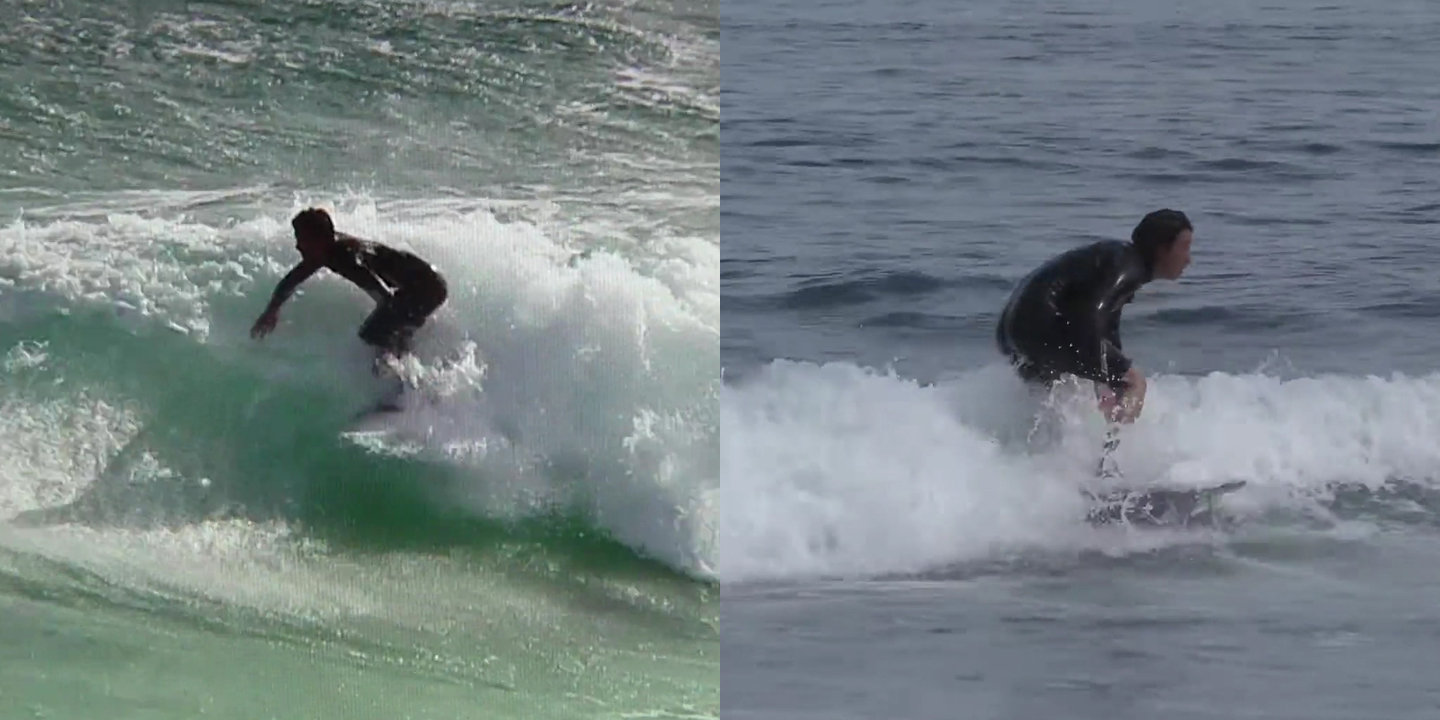
11) Finish: surfers at this level tend to complete maneuvers in a relaxed posture that allows them to seamlessly transition into another turn.
Gabriel Medina’s take:


